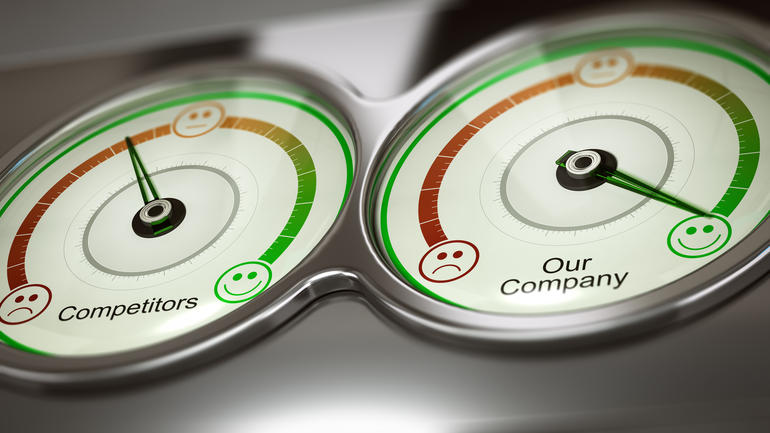
by Moira Alexander
Republished from TechRepublic, June 28, 2017
Key performance indicators (KPIs) are used throughout projects and organizations as a whole to help measure progress in areas like financial performance, marketing performance, quality specifications, human resource performance and company-wide strategy as a whole.
Dashboards can be an easy way track KPIs by aggregating project information from multiple sources into one visual display. They offer a way to gain insights into KPIs in more meaningful ways and help project teams identify what happened in the past, what is happening, and then determine and implement sustainable improvements to the KPIs they are using.
What are some of the key benefits project leaders gain from using dashboards?
Sarah Meerschaert, a certified project manager working with the R&D team at CenTrak, an enterprise location services company, believes a dashboard is a great way to show stakeholders how a specific project or how a portfolio is performing. “I prefer to use dashboards to show how a team or an initiative as a whole is performing,” she said.
Meerschaert explained that ideally, dashboards should offer at-a-glance data. “It should be the kind of thing someone can quickly pull up to pull data while on a call, but also have the flexibility and detail that allows managers to drill down to raw data for auditing purposes or to make tough decisions about which projects to fund or cut,” she said. “The best tools I’ve seen are web-based and pull data from updated Excel files or updated databases, providing accurate and up to date information.”
Companies can practically leverage dashboards to improve specific KPI tracking
“Projects often have many different implications across business units, which is why it’s important to set up dashboards that are specific to each stakeholder’s needs,” said Ben Carpel, CEO of business dashboard creator Cyfe. “Everyone has different KPIs that are important to them. Some are mostly interested in making sure that the project deliverables are progressing nicely. Others need to know that the tasks are being handled up to standard….When you have the flexibility to present different cross sections of these various types of information alongside each other, you start to get a holistic picture of the situation from whatever perspective matters to you most.”
What are some of the key features companies should look for?
Meerschaert and Carpel said visual simplicity and automatic updates are key features for dashboards. “If I can’t read the graphs, I might as well be looking at the raw data,” said Meerschaert. “I also want a web based tool — I never know when or where I’m going to need an update. Data should be automatically updated. It also shouldn’t take a data scientist to set up a new KPI – this is often lacking.”
“The ability to create attractive visualizations from a wide variety of data sources, with minimal setup effort or technical knowhow, is a major advantage,” said Carpel. “It’s especially useful for IT professionals who want to give project managers, or basically anyone outside of the IT department, the ability to build and adjust their own dashboards.”
Rohit Keserwani, a retail banking BI consultant for Equifax believes that when it comes to the most important service-level features:
- the most important four to five (or a maximum of seven in extreme situations) should be displayed prominently on the dashboard,
- the best dashboards are those which are aligned to the business strategy and dashboards should fit in one screen and,
- the user shouldn’t have to scroll down or sideways.
Choosing a dashboard
Choosing the best solution can be tricky, understand your business goals, the kind of information you need, or are missing and research solutions carefully. Talk with vendors about how they can help your business and make sure their offerings meet your specific goals.
Keserwani recommended that companies should look for solutions that help increase focus on decision making, and can help run complex business scenarios. “When complex business situations demand a bird’s eye view of the entire organization, BI dashboards provide all the necessary KPIs monitoring in a capsule format for to be assimilated by business users,” he said. “It makes life simple when there is a common source of information leading to a single version of truth.”
Another factor in the decision should be whether a solution is capable of developing a scorecard by consolidating diverse KPIs. “Imagine an insurance company where the marketing department is pushing hard to generate more business, while the risk department has its reservations with a certain product line being more risky than profitable,” said Keserwani. “Dashboards help consolidate all the desired KPIs, no matter how diverse or apparently unrelated, into a modeled score which gives a quantitatively balanced view to the management. In manufacturing industry, a similar example I can think of is to integrate quality and cost KPIs. In credit cards business similar thing can be done to assess a portfolio leading to an understanding whether collection is going to be more costly than writing off the delinquent accounts.”
Visual dashboards can take up much of the ‘heavy-lifting’ project leaders, and teams are typically tasked with doing, and some of the tools out there are user-friendly, even for those without any IT experience.
